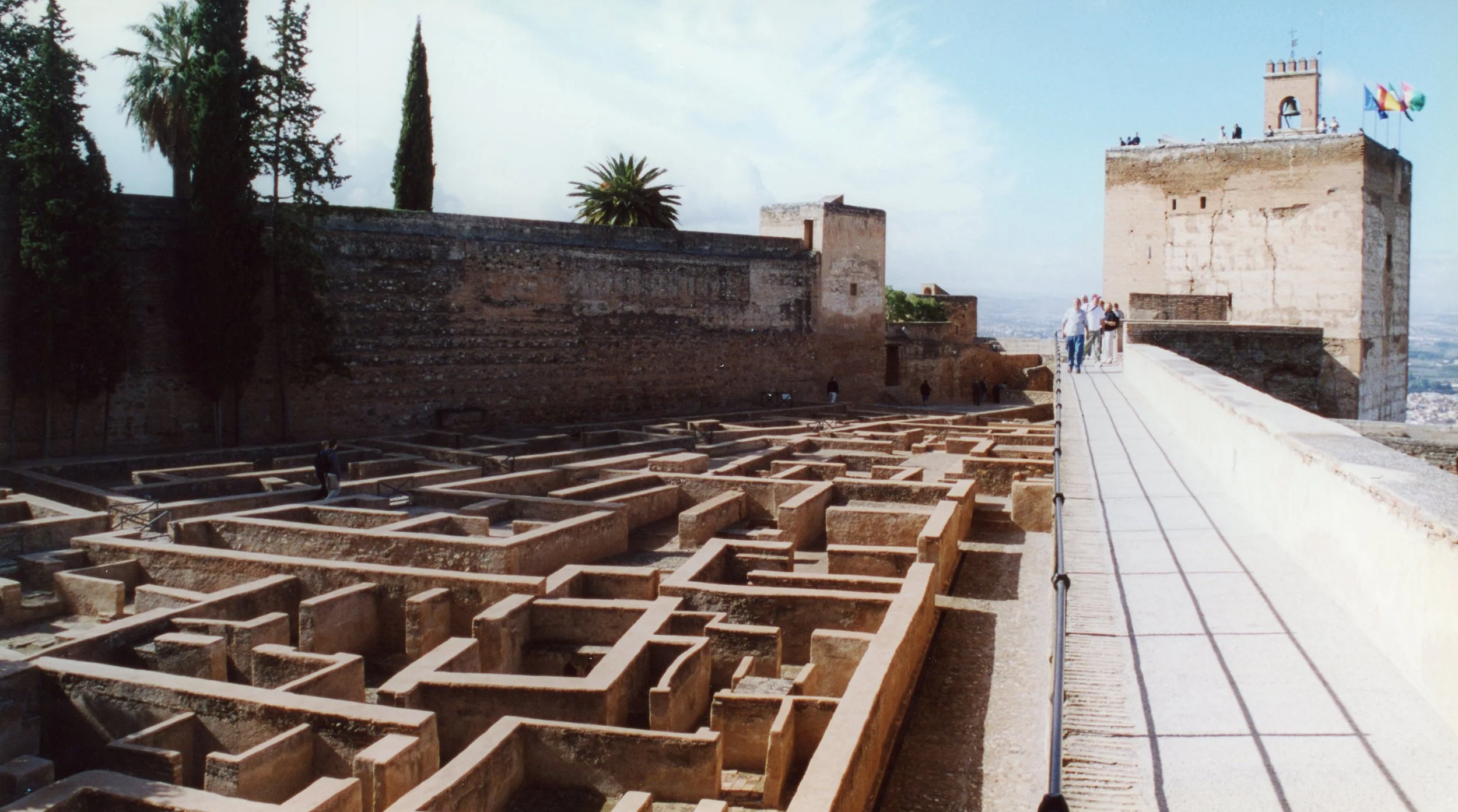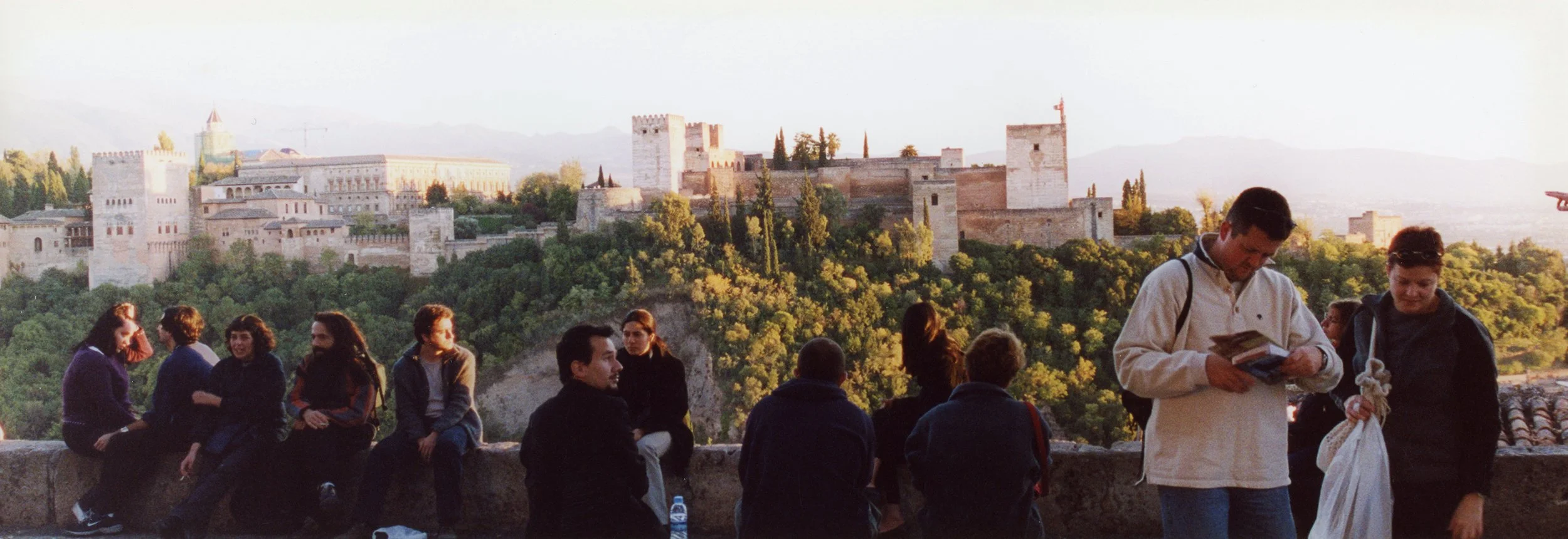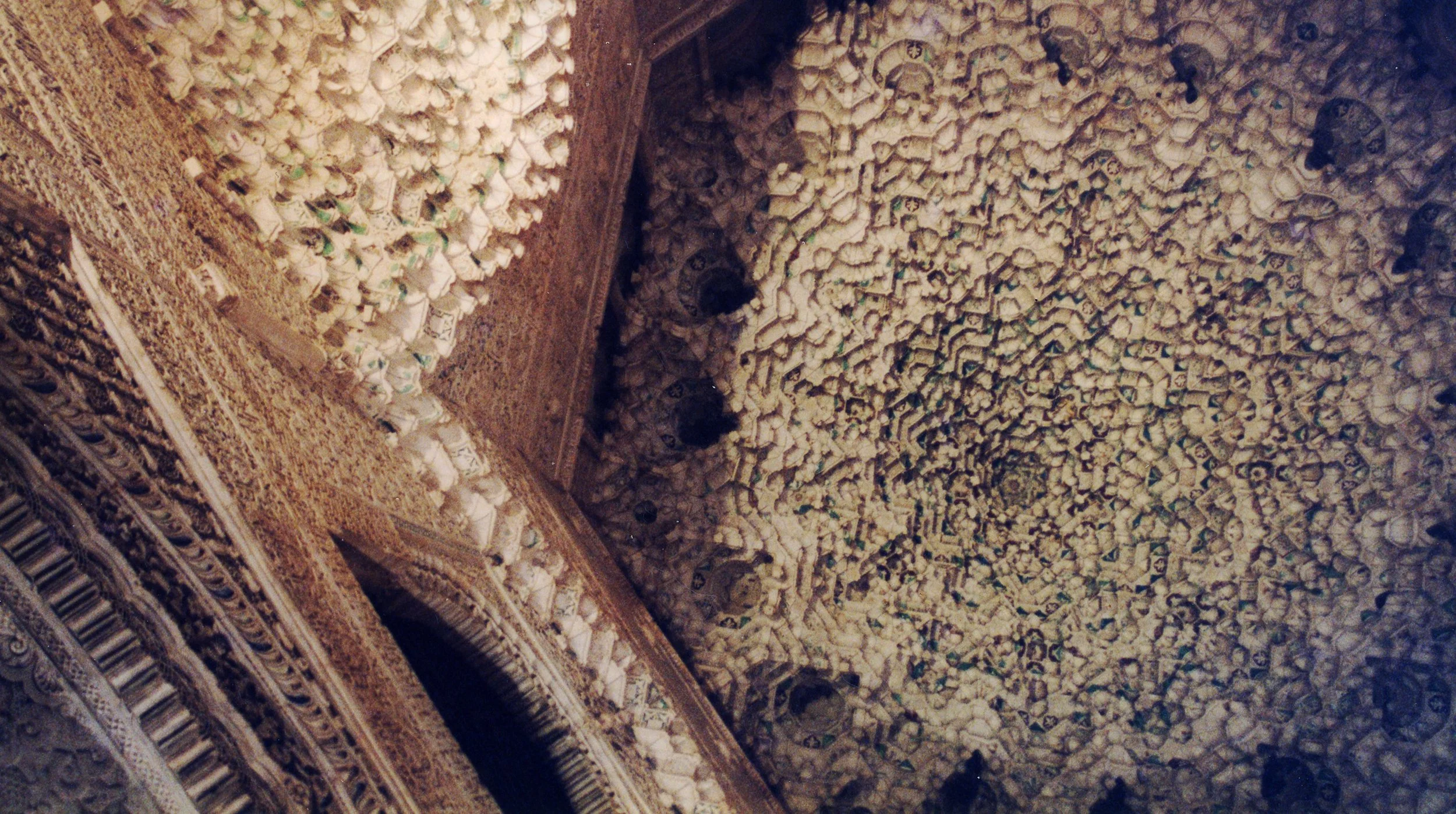
Page 3 of 5
Granada, Spain
In the hope of saving me, in the hope of saving me
For almost eight centuries, the Moors ruled all or parts of southern Spain. It all came to an end in Granada where they surrendered to Catholic forces led by Ferdinand and Isabella early in that fateful year of 1492. What they surrendered included the high point of Andalusian culture, one of the greatest buildings the world has ever seen and home to their very last stand, the incomparable Alhambra.
High above Granada, the Alhambra features four main components: the wonderful Palace Nazaries, the conquering Charles the Fifth's own square palace, the near perfect Generalife Gardens and the Alcazaba, the fortress at its most defensible end. In between the storied buildings are landscaped walks with dripping, gurgling fountains. Everywhere you look (or listen) you find yourself in the presence of water, except for possibly here. This is what survives of the Alcazaba, for twelve hundred years bravely protecting whoever lived behind its faithful walls.
Inside the palace and its Court of Lions, originally a working clock before the reconquista got its hands on it. The palace is a series of courtyards with dripping fountains and halls with dripping ceilings. The ornate ceilings are everywhere, little stalactites sculpted from every Moorish arch, from every ceiling.
Historically, two things happened at the Alhambra in 1492. First the Moors lost control of their last stronghold in Spain, surrendering to a unified, Catholic state. Second, the victors (Isabella and Ferdinand) moved into this palace and ruled their Spain, entertaining requests (in rooms carved with Islamic script saying "Allah is great") from such people as Christopher Columbus, a man in search of a shorter way east that ended up finding the Christian west.
Ascending the ridge to the Alhambra from Granada is easy, but once you get there things can be difficult. Tickets and access are strictly limited, every day people travel all the way to Granada only to find that they're not allowed inside the best thing there. To assuage those fears, I bought my tickets online, well in advance. My ticket guaranteed a midday admission to the palace at 1pm and another, separate ticket guaranteed a night visit at 10pm. I wasn't sure what to expect on the night visit, but certainly expected it to be interesting.
At night, the gardens and Alcazaba are closed, all that remains open are the abandoned landscaped paths and the palace itself. Once inside, visitors find that the palace's remarkable ceilings are magnificently uplit, what hid in the shadows of the day are magnificently exposed. What impressed me most that night was more than the palace, it was walks like this- barely visible under the moon and steplights- abandoned, peaceful, perfect.
Chances are fairly good that you have never heard of the Alhambra or even Granada, that you probably have heard of the Moors but merely dismissed them as vanquished conquerors. During the Middle Ages, between the fall of Rome and the Renaissance when the rest of Europe was content on living without greatness, the Moors managed to build a powerful, graceful culture and empire throughout southern Spain. Personally I had never heard of the Alhambra itself before the fall of 1988, my "History of Architecture 1" class and a thoughtful professor whose name I fail to remember managed to change all that with a few slides and some well thought words.
This is the late afternoon view back to the Alhambra from the Albayzin, an old Muslim neighborhood. Isabella and Ferdinand promised safe harbor and religious freedom to the surviving population, although this surviving population did not fare especially well during the seemingly unending Spanish Inquisition. One of the results was this viewpoint, a small plaza in front of a conquering Catholic church, back to their former stronghold and protector. The Alcazaba is on the right, while the palace is on the lower part of the hill on the left.
The Generalife Gardens (pronounced Henn-er-all-eef-ay according to my guidebook) were contained behind and through hedge walls. These carved, living walls sometimes contained gates, sometimes protected private courtyards and always seemed present. Often (as in much of the Alhambra) they were used to visually shield you from nearby gurgling fountains, heightening your awareness and curiosity as you explored such mysterious wonders.
Down the main axis, through the hedges, into rooms and spaces of the deceptively busy gardens, through worlds often best explored when less of the world's tour buses are visiting.
Despite all appearances to the contrary, a view that is not the same as the previous slide, of reflections, of water, of life.
Foreground and background from the gardens and back to the palaces and the Alcazaba. One of the strong candidates or the coveted title of the last of the regularly scheduled slides.
From one tower of the Alcazaba to another, this is the view as Granada's own Albayzin, home to Moors and Gypsies and people who felt protected and safe in the shadow of such a strong, nearby tower. For anyone with a particularly good memory, one of the slides above (the late afternoon panorama of the entire Alhambra complex) was taken from the wall in front of the small tan church in the upper right quarter of the picture. For anyone without a particularly good memory, well, I guess it's just on to the next slide.
Physically not far from the fountain shown above but still a world away, on the ascent from Granada into the wonders of the Alhambra, a first glimpse into the Alcazaba, into the wonder and strength hidden behind such faithful walls.
From my night visit, looking up at the freshly illuminated ceilings, with all its carvings, with all its dripping, intentional stalactites, with all its surviving glory somehow still intact.
The last of the regularly scheduled Bonus Slides and one of my favorite pictures, inside the throne room and up its walls and into its wood carved ceiling. In this room an empire and eventual world was decided- this is the room where (in full witness of all of those the "Allah is great" caliphs carved in its intricate walls) Isabella and Ferdinand gave Columbus the go ahead to eventually change the world and create a Spanish, Catholic Empire in their names.













